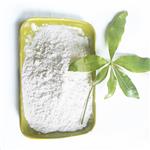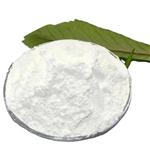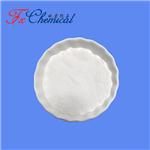- Carbachol
-

- $0.00 / 25KG
-
2023-08-29
- CAS:51-83-2
- Min. Order: 1KG
- Purity: 99%
- Supply Ability: 50000KG/month
- Carbachol
-

- $20.00 / 1kg
-
2023-03-09
- CAS:51-83-2
- Min. Order: 1kg
- Purity: 99%
- Supply Ability: 5000 Ton
- Carbachol
-

- $0.00 / 1KG
-
2023-01-13
- CAS:51-83-2
- Min. Order: 1KG
- Purity: 98%min
- Supply Ability: 30tons/month
|
| | Carbachol Basic information |
| | Carbachol Chemical Properties |
| Melting point | 210 °C (dec.) (lit.) | | density | 1.2798 (rough estimate) | | refractive index | 1.5557 (estimate) | | storage temp. | Desiccate at RT | | solubility | H2O: 1 g/mL | | form | crystalline | | pka | pKa 4.8 (Uncertain) | | color | white | | Water Solubility | 1.0 G/ML | | Sensitive | Hygroscopic | | Merck | 14,1779 | | BRN | 3917459 | | Stability: | Hygroscopic | | CAS DataBase Reference | 51-83-2(CAS DataBase Reference) | | NIST Chemistry Reference | Carbachol(51-83-2) | | EPA Substance Registry System | Carbachol chloride (51-83-2) |
| | Carbachol Usage And Synthesis |
| Description | Unlike acetylcholine and methacholine, carbachol contains a carbamino functional group
instead of an acetyl group, which is not responsive to hydrolysis by cholinesterase. In vitro
studies have shown that the rate of hydrolysis is at least twice as slow as that of acetyl�choline. | | Chemical Properties | Carbachol chloride is a crystalline odorless
powder which, on standing in an open container, develops
a faint odor resembling that of an aliphatic amine. | | Chemical Properties | white crystalline powder | | Originator | Miostat,Alcon,US,1979 | | Uses | Carbachol is a cholinergic agonist and is used for the treatment of glaucoma. It is also used as ophthalmic solution (eye drops) during ophthalmic surgery. | | Uses | cholinergic, miotic | | Uses | Carbamylcholine Chloride is a cholinergic receptor agonist. Studies show that Carbamylcholine Chloride is resistant to the action of cholinesterases. Carbamylcholine Chloride also displays antiapoptotic effects in cerebellar granule neurons. | | Uses | Carbachol is a powerful cholinic ester that stimulates both muscarinic and nicotinic
receptors, as well as exhibits all of the pharmacological properties of acetylcholine while
in addition resulting in vasodilation, a decrease in heart rate, an increase in tone and con�tractability of smooth muscle, stimulation of salivary, ocular, and sweat glands as well as
autonomic ganglia and skeletal muscle. For this reason, use of carbachol, like acetyl�choline, is limited. The exception is that it is used in ophthalmological practice and post�operational intestines and bladder atony. Upon administration in the eye, the pupil
constricts and the intraocular pressure is reduced. It is used for severe chronic glaucoma. | | Definition | An acetylcholine counterfit molecule that is not
inactivated by acetylcholinesterase and is a slowly
hydrolyzed cholinergic agonist that acts at both
muscarinic and nicotinic receptors. | | Manufacturing Process | About 14 g of choline chloride are stirred with a solution of about 20 g of
phosgene in 100 g of chloroform for about two hours at room temperature.
The mixture becomes a two-phase liquid mixture. Hydrochloric acid and
excess phosgene are removed by distillation in vacuo. Chloroform is added to
the syrup, and the mixture is then added to a solution of excess ammonia in
chloroform which was cooled with solid carbon dioxide-acetone. The mixture is
filtered, and the solid is extracted with hot absolute alcohol. The solid in the
alcoholic solution is precipitated with ether, and filtered. It is recrystallized
from a methyl alcohol-ether mixture; the carbaminoyl-choline chloride
obtained has a melting point of about 208°-210°C. | | Brand name | Carbastat
(Novartis); Miostat (Alcon). | | Therapeutic Function | Cholinergic | | General Description | Carbachol forms a carbamylester in the active site of AChE, which is hydrolyzedmore slowly than an acetyl ester. This slower hydrolysis ratereduces the amount of free enzyme and prolongs the durationof ACh in the synapse. Carbachol also stimulates theautonomic ganglia and causes contraction of skeletal musclebut differs from a true muscarinic agent in that it does nothave cardiovascular activity despite the fact that it seems toaffect M2 receptors. | | General Description | Prismatic crystals or powder. Odorless, but develops a faint odor of aliphatic amine upon standing in an open container. Cholinergic, parasympathomimetic, used chiefly in large animals, especially for colic in the horse. | | Air & Water Reactions | Hygroscopic. | | Reactivity Profile | Carbachol is a carbamate ester. Carbamates are chemically similar to, but more reactive than amides. Like amides they form polymers such as polyurethane resins. Carbamates are incompatible with strong acids and bases, and especially incompatible with strong reducing agents such as hydrides. Flammable gaseous hydrogen is produced by the combination of active metals or nitrides with carbamates. Strongly oxidizing acids, peroxides, and hydroperoxides are incompatible with carbamates. | | Hazard | Deadly poison; may cause lowered blood
pressure, venous dilation, nausea or vomiting,
sweating and lachrymation; a parasympathetic
nerve stimulant. | | Health Hazard | Highly toxic by mouth. | | Fire Hazard | When heated to decomposition, Carbachol emits very toxic fumes of chloride and nitrogen oxides. The aqueous solution is stable even when heated. | | Biological Activity | Cholinergic receptor agonist that is resistant to the action of cholinesterases. Blocks apoptosis in cerebellar granule neurons. | | Biochem/physiol Actions | Non-selective cholinergic agonist that is resistant to the action of cholinesterases; inhibits apoptotic death of cultured neurons, and may induce apoptosis in thymocytes. | | Clinical Use | Carbachol is a miotic and has been used to reduce the intraoculartension of glaucoma when a response cannot beobtained with pilocarpine or neostigmine. Penetration of thecornea is poor but can be enhanced by the use of a wettingagent in the ophthalmic solution. In addition to its topicaluse for glaucoma, carbachol is used during ocular surgery,when a more prolonged miosis is required than can be obtainedwith ACh chloride. | | Synthesis | Carbachol, 2-carbamoyloxy-N,N,N-trimethylethyl ammonium chloride
(13.1.7), is made by reacting 2-chloroethanol with phosgene, which forms 2-chloroethyl
chloroformate (13.1.5). Upon reaction with ammonia, it turns into the corresponding
amide (13.1.6), which is further reacted with an equimolar quantity of trimethylamine, giv�ing carbachol (13.1.7) [9¨C13]. 
| | Potential Exposure | Used in veterinary medicine as a
cholinergic; parasympathomimetic, used chiefly in large
animals, especially for colic in the horse | | First aid | If this chemical gets into the eyes, remove anycontact lenses at once and irrigate immediately for at least15 min, occasionally lifting upper and lower lids. Seek medical attention immediately. If this chemical contacts theskin, remove contaminated clothing and wash immediatelywith soap and water. Seek medical attention immediately. Ifthis chemical has been inhaled, remove from exposure,begin rescue breathing (using universal precautions, including resuscitation mask) if breathing has stopped and CPR ifheart action has stopped. Transfer promptly to a medicalfacility. When this chemical has been swallowed, get medical attention. Give large quantities of water and inducevomiting. Do not make an unconscious person vomit. | | storage | Desiccate at RT | | Shipping | UN3249 Medicine, solid, toxic, n.o.s., Hazard
Class: 6.1; Labels: 6.1-Poisonous materials. UN2811 Toxic
solids, organic, n.o.s., Hazard Class: 6.1; Labels: 6.1-
Poisonous materials, Technical Name Required. | | Incompatibilities | Carbachol chloride is a carbamate ester.
Esters are generally incompatible with nitrates. Moisture
may cause hydrolysis or other forms of decomposition.
Carbamates are incompatible with strong acids and bases,
and especially incompatible with strong reducing agents
such as hydrideds and active metals. Contact with active
metals or nitrides form flammable gaseous hydrogen.
Incompatible with strongly oxidizing acids, peroxides, and
hydroperoxides. | | Waste Disposal | It is inappropriate and possibly dangerous to the environment to dispose of expired or
waste pharmaceuticals by flushing them down the toilet or
discarding them to the trash. Household quantities of
expired or waste pharmaceuticals may be mixed with wet
cat litter or coffee grounds, double-bagged in plastic, discard in trash. Larger quantities shall carefully take into consideration applicable DEA, EPA, and FDA regulations. If
possible return the pharmaceutical to the manufacturer for
proper disposal being careful to properly label and securely
package the material. Alternatively, the waste pharmaceutical shall be labeled, securely packaged, and transported by
a state licensed medical waste contractor to dispose by
burial in a licensed hazardous or toxic waste landfill or
incinerator. |
| | Carbachol Preparation Products And Raw materials |
|